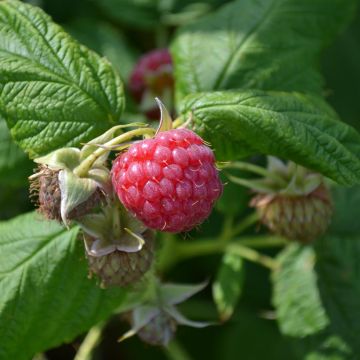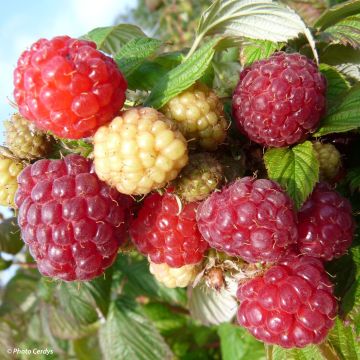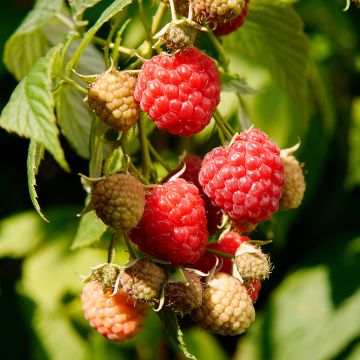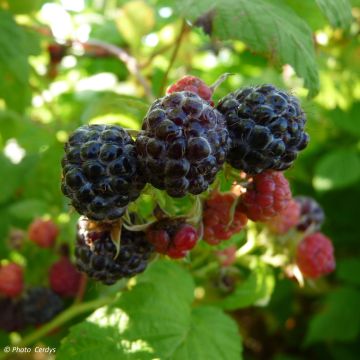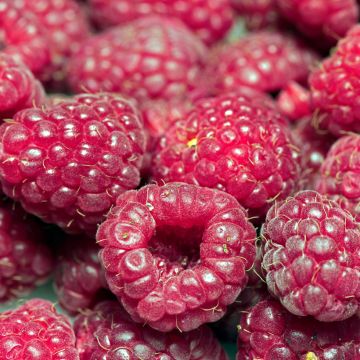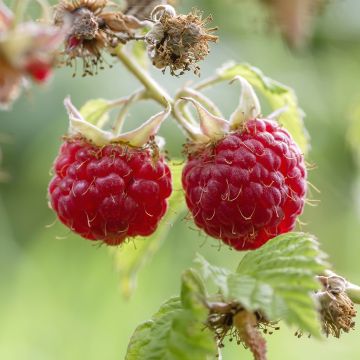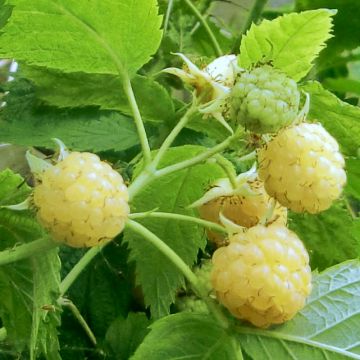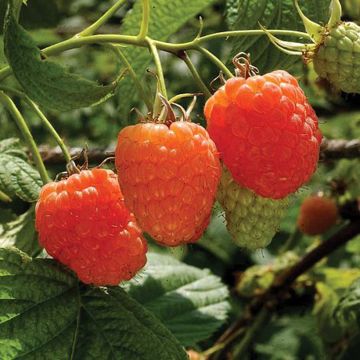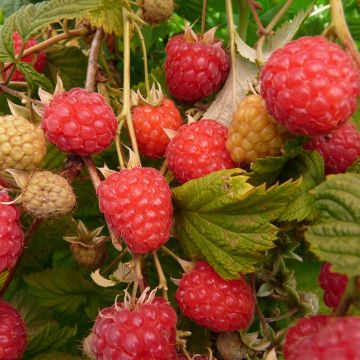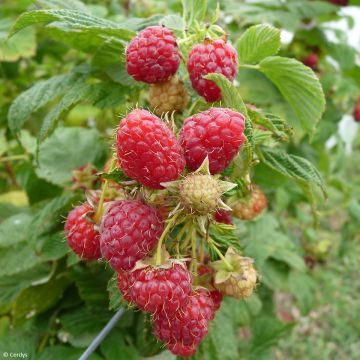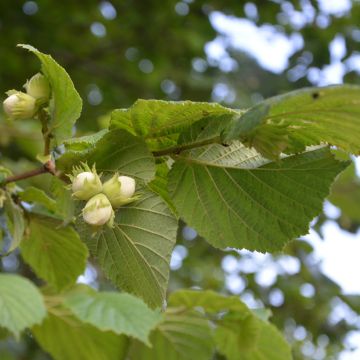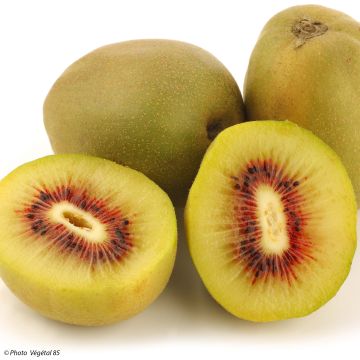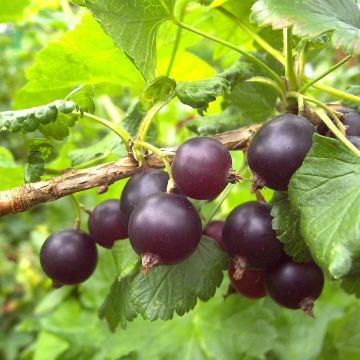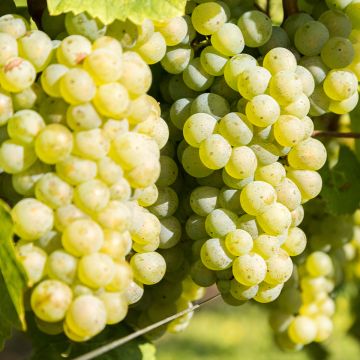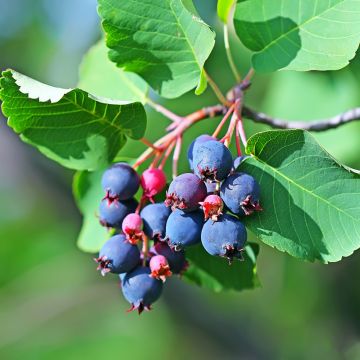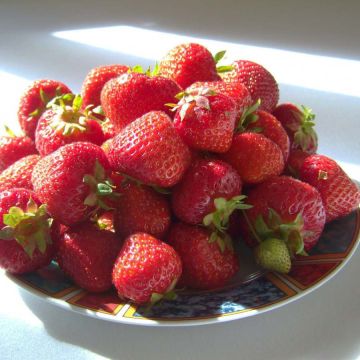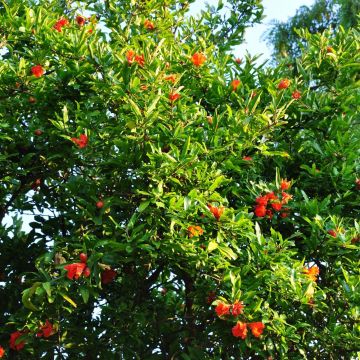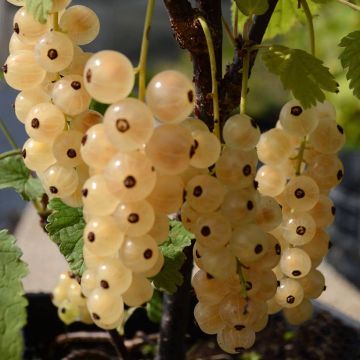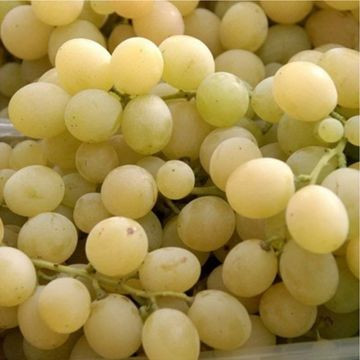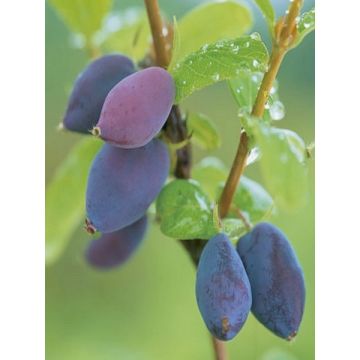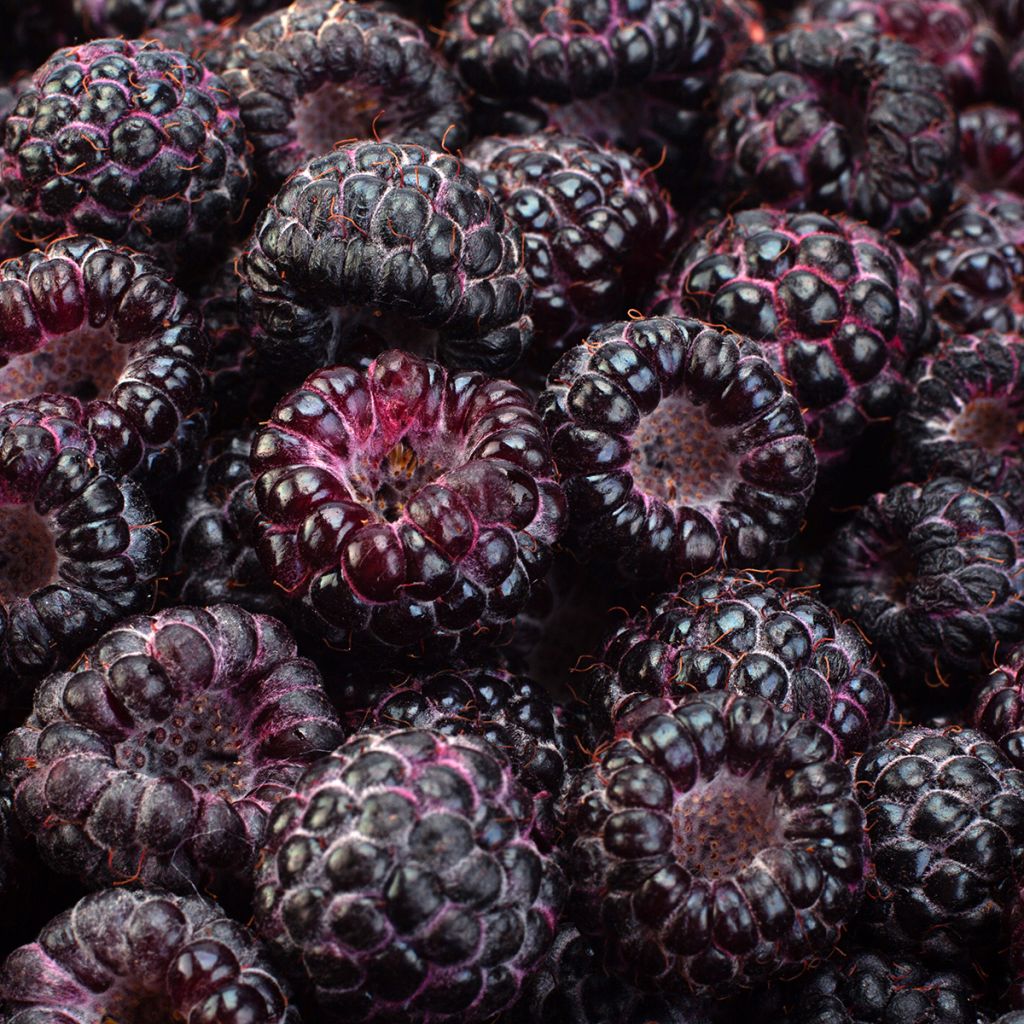

Glen Coe Raspberry
Glen Coe Raspberry
Rubus x neglectus Glen Coe
Raspberry 'Glencoe'
This item cannot be shipped to the selected country
Delivery charge from €5.90
Delivery charge from €5.90
Delivery to Corse prohibited
More information
Schedule delivery date,
and select date in basket
This plant carries a 6 months recovery warranty
More information
We guarantee the quality of our plants for a full growing cycle, and will replace at our expense any plant that fails to recover under normal climatic and planting conditions.
From €5.90 for pickup delivery and €6.90 for home delivery
Express home delivery from €8.90.
From €5.90 for pickup delivery and €6.90 for home delivery
Express home delivery from €8.90.
Delivery to Corse prohibited: UE law prohibits the import of this plant from mainland France to Corse as part of the fight against Xylella fastidiosa. Please accept our sincere apologies.
More information

Description
Rubus idaeus 'Glen Coe' is a Scottish hybrid, resulting from cross-breeding between a black-fruited raspberry and a red-fruited one. The result is a vigorous and highly productive variety that bears sweet purple-violet fruits. Its thornless stems are adorned with white flowers in May, which develop into raspberries ready to be harvested from July onwards. The aromatic fruit can be consumed fresh or used in pies, desserts, or jams. The maintenance of this raspberry bush is limited to an annual pruning of the oldest stems, which should be done in early spring. This hardy variety is easy to grow in non-scorching sunlight or partial shade, in moist, fertile, and well-drained garden soil.
Rubus idaeus belongs to the extensive Rosaceae family, like strawberries, brambles, and wild roses. It is native to temperate Europe and Asia (from Turkey to China and Japan) and has been cultivated since the Middle Ages. It can be found in mountain forests and lowlands. It is a suckering shrub composed of upright, cylindrical stems that die in their second year after fruiting. The plant's base produces new stems every year. There are other species of raspberries, originating from Europe, Asia, or America.
'Glen Coe' is the result of a cross-breeding between Rubus idaeus 'Glen Prosen' - a local Scottish variety with red fruits - and R. occidentalis 'Munger', a black-fruited variety from North America that was introduced in 1897 and extensively cultivated on more than 600 hectares in Oregon. This hybrid was developed by the Scottish Crops Research Institute, an agricultural research centre near Dundee (now integrated into the James Hutton Institute). Introduced to the market in 1989, 'Glen Coe' still surprises with the unique colour of its fruits, which is intermediate between its two parents.
This fast-growing raspberry bush produces vigorous, slightly bluish shoots. The stems are thornless, which is a definite advantage during harvest! The deciduous leaves are a vibrant green, and the winter wood takes on a beautiful burgundy colour. Simple white flowers appear in May, grouped in numerous small clusters. They are popular with bees. Once pollinated, the flowers develop into almost spherical fruits, which take on a deep purple-violet hue. These raspberries are composed of small fleshy drupes clustered together. They ripen from late June to early July and last until August-September. This hardy variety tolerates temperatures below -20°C (-4°F). It thrives in neutral to acidic moist soil, in sunny or partially shaded locations. The fruits appear on 2-year-old shoots. These shoots should be pruned to ground level at the end of the following winter to enable new fruit-bearing shoots to grow.
Raspberries should be consumed soon after picking, as they do not keep well. Since this variety yields a bountiful harvest, consider making coulis, sorbets, pies, or jams with them. They can also be frozen. The production reaches its normal level in the third year after planting. A plant can bear fruit for around 10 years.
Mayberry (Lonicera caerulea subsp. kamtschatica), red currants, black currants, blueberries, blackberries, and climbing strawberries are good companions for this delicious raspberry bush. Their compact size and ease of cultivation make all these small fruits perfect candidates for creating a fruit hedge.
Report an error about the product description
Glen Coe Raspberry in pictures
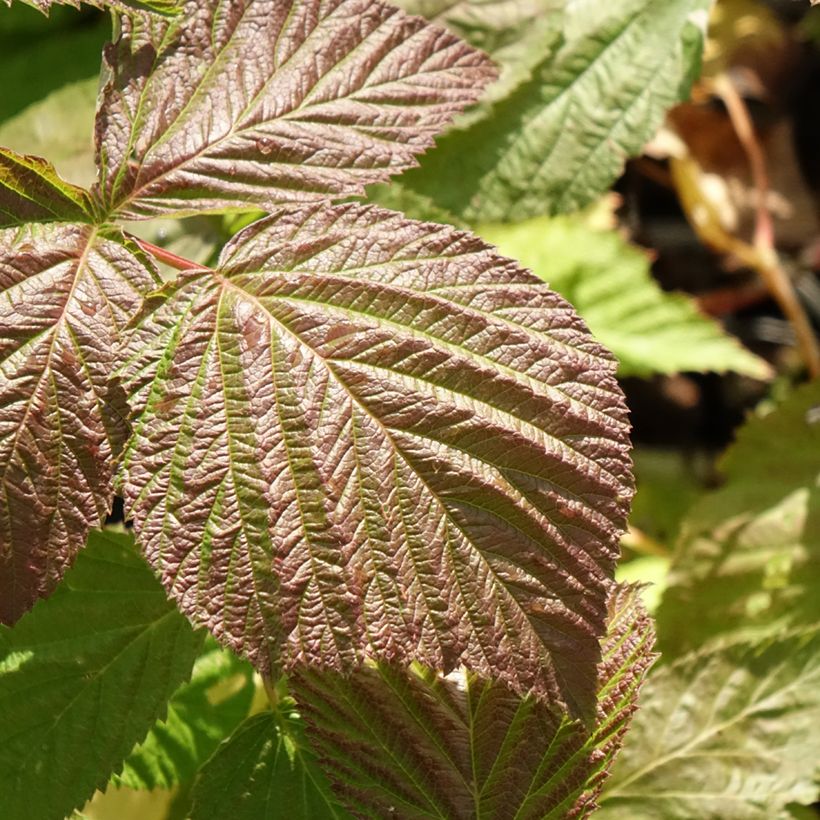

Plant habit
Fruit
Flowering
Foliage
Botanical data
Rubus
x neglectus
Glen Coe
Rosaceae
Raspberry 'Glencoe'
Cultivar or hybrid
Other Raspberry plants
Planting and care
It prefers humus-rich soil that retains moisture, even in summer, without too much limestone. It appreciates partially shaded but bright exposures. In cool regions, it will tolerate sunlight well. In warmer and sunnier regions, it prefers partial shade. Plant it from October to March in ordinary soil enriched with compost and well-rotted manure.
Plant them every 70cm (28in) in rows spaced 1.2m (4ft) apart. During planting, the collar should be level with the ground. Regularly water in the first year of planting to encourage root growth. Provide water during periods of high heat or prolonged drought. Weed the surface, especially at the beginning of planting, and apply mulch to keep moist in summer.
It can be susceptible to diseases if growing conditions are not optimal (raspberry anthracnose, raspberry rust, powdery mildew, grey mould during rainy periods, or Botrytis). The damage observed in cultivation is due to unfavourable weather conditions, especially during cold springs that allow micro-fungi present in the soil to infest the vegetation. To protect the bushes, it is recommended to fertilise them with organic fertilisers that encourage anaerobic bacteria to multiply in the soil, which strengthens the soil's ability to stimulate the plants' immune system.
Raspberries are often attacked by certain pests such as raspberry worms, the larvae of a small beetle that lodges in the fruits, but 'Glen Coe' is generally immune to this. Byturus tomentosus, a harmful insect, is not attracted to this variety.
Planting period
Intended location
Care
-
, onOrder confirmed
Reply from on Promesse de fleurs
Berries
Haven't found what you were looking for?
Hardiness is the lowest winter temperature a plant can endure without suffering serious damage or even dying. However, hardiness is affected by location (a sheltered area, such as a patio), protection (winter cover) and soil type (hardiness is improved by well-drained soil).

Photo Sharing Terms & Conditions
In order to encourage gardeners to interact and share their experiences, Promesse de fleurs offers various media enabling content to be uploaded onto its Site - in particular via the ‘Photo sharing’ module.
The User agrees to refrain from:
- Posting any content that is illegal, prejudicial, insulting, racist, inciteful to hatred, revisionist, contrary to public decency, that infringes on privacy or on the privacy rights of third parties, in particular the publicity rights of persons and goods, intellectual property rights, or the right to privacy.
- Submitting content on behalf of a third party;
- Impersonate the identity of a third party and/or publish any personal information about a third party;
In general, the User undertakes to refrain from any unethical behaviour.
All Content (in particular text, comments, files, images, photos, videos, creative works, etc.), which may be subject to property or intellectual property rights, image or other private rights, shall remain the property of the User, subject to the limited rights granted by the terms of the licence granted by Promesse de fleurs as stated below. Users are at liberty to publish or not to publish such Content on the Site, notably via the ‘Photo Sharing’ facility, and accept that this Content shall be made public and freely accessible, notably on the Internet.
Users further acknowledge, undertake to have ,and guarantee that they hold all necessary rights and permissions to publish such material on the Site, in particular with regard to the legislation in force pertaining to any privacy, property, intellectual property, image, or contractual rights, or rights of any other nature. By publishing such Content on the Site, Users acknowledge accepting full liability as publishers of the Content within the meaning of the law, and grant Promesse de fleurs, free of charge, an inclusive, worldwide licence for the said Content for the entire duration of its publication, including all reproduction, representation, up/downloading, displaying, performing, transmission, and storage rights.
Users also grant permission for their name to be linked to the Content and accept that this link may not always be made available.
By engaging in posting material, Users consent to their Content becoming automatically accessible on the Internet, in particular on other sites and/or blogs and/or web pages of the Promesse de fleurs site, including in particular social pages and the Promesse de fleurs catalogue.
Users may secure the removal of entrusted content free of charge by issuing a simple request via our contact form.
The flowering period indicated on our website applies to countries and regions located in USDA zone 8 (France, the United Kingdom, Ireland, the Netherlands, etc.)
It will vary according to where you live:
- In zones 9 to 10 (Italy, Spain, Greece, etc.), flowering will occur about 2 to 4 weeks earlier.
- In zones 6 to 7 (Germany, Poland, Slovenia, and lower mountainous regions), flowering will be delayed by 2 to 3 weeks.
- In zone 5 (Central Europe, Scandinavia), blooming will be delayed by 3 to 5 weeks.
In temperate climates, pruning of spring-flowering shrubs (forsythia, spireas, etc.) should be done just after flowering.
Pruning of summer-flowering shrubs (Indian Lilac, Perovskia, etc.) can be done in winter or spring.
In cold regions as well as with frost-sensitive plants, avoid pruning too early when severe frosts may still occur.
The planting period indicated on our website applies to countries and regions located in USDA zone 8 (France, United Kingdom, Ireland, Netherlands).
It will vary according to where you live:
- In Mediterranean zones (Marseille, Madrid, Milan, etc.), autumn and winter are the best planting periods.
- In continental zones (Strasbourg, Munich, Vienna, etc.), delay planting by 2 to 3 weeks in spring and bring it forward by 2 to 4 weeks in autumn.
- In mountainous regions (the Alps, Pyrenees, Carpathians, etc.), it is best to plant in late spring (May-June) or late summer (August-September).
The harvesting period indicated on our website applies to countries and regions in USDA zone 8 (France, England, Ireland, the Netherlands).
In colder areas (Scandinavia, Poland, Austria...) fruit and vegetable harvests are likely to be delayed by 3-4 weeks.
In warmer areas (Italy, Spain, Greece, etc.), harvesting will probably take place earlier, depending on weather conditions.
The sowing periods indicated on our website apply to countries and regions within USDA Zone 8 (France, UK, Ireland, Netherlands).
In colder areas (Scandinavia, Poland, Austria...), delay any outdoor sowing by 3-4 weeks, or sow under glass.
In warmer climes (Italy, Spain, Greece, etc.), bring outdoor sowing forward by a few weeks.

































